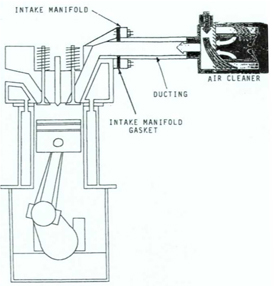Using oil analysis to detect dust early.
Before the use of oil analysis, a dust entry problem would go undetected until a routine strip down or a failure occurred. Even then, often the wear would be attributed to lubricant breakdown or normal wear and tear. With the use of oil analysis, the picture changes. As soon as a dust entry problem occurs there is an increase in the silicon level of the oil and an acceleration of the wear pattern. As long as the oil samples are being taken at regular intervals in the correct manner, the dust entry will be detected at a very early stage. If effective corrective action is taken, the life of the component will be significantly increased, reducing maintenance costs.
It is beyond the scope of this article to discuss every type of dust damage in all components, so engines will be used as an example. Engines are at high risk to dust entry as large volumes of air are taken into the system and the close tolerances make it susceptible to even the smallest dust particle.
When an engine has a dust entry problem, the type of wear that takes place is related to the manner in which the dust enters. Therefore, by examining the type of wear taking place, it is possible to discover how the dust is entering the system. When studying an oil analysis report there are four possible wear patterns:
- Normal wear
- Increased top-end wear
- Increased bottom-end wear
- All wear rates increased

Image: Engine air cleaner system
1. Normal wear
It is unlikely that there will be a dust entry problem without an increase in wear rates. If normal wear patterns combine with high silicon readings, there are two main possibilities:
-
A silicone sealant, grease or additive is in use
-
Accidental contamination of the sample
Action to be taken
Check if an additive, grease or sealants have been used recently on the engine.
If no, check if correct sampling technique was used.
If yes, phone lab to confirm that additive can cause high silicon reading. If necessary, send sample to confirm.
If there is still doubt as to what caused the high silicon reading, a check sample should be taken.
Was the oil changed when the first sample was taken?
If no, send a check sample and, as a precaution, change the oil.
If yes, send a check sample only after the engine has run for 50 hours or 1000km.
2. Increased top-end wear
Increased top-end wear is caused by airborne dust that has been drawn into the combustion chamber being forced between the ring, piston and cylinder. This is caused by a defective air cleaner or a damaged induction system.
Action to be taken
Inspect the air filter element thoroughly, and check its seals and support frame for damage and distortion. Check the pleats for damage. If there is any doubt about a filter element, it should always be changed.
Next, check the induction hosing for damage, cracks, etc. and make certain that all hose clamps are secure. The breather and compressor are often connected to the induction system but are frequently overlooked. Check that both are functioning normally and their hoses are sound and secure.
Next, check the inlet manifold for cracks, and check that the gaskets are sound and secure.
Was a leak found?
If no, run the engine at idle and block off the air intake. The engine should stall within three seconds. If the engine does not stall, listen carefully at the joints for air being sucked in. Take a check sample after 50 hours or 1000km.
If yes, determine the condition of the engine. Check compression and blow-by. Repair the leak.
If normal, monitor the oil consumption as a safeguard.
If abnormal, schedule to have the piston rings replaced and the piston and liners examined.
3. Increased bottom-end wear
This indicates that dirt is getting into the lube oil directly and not past the piston and rings. The likely sources are:
-
Leaking seals
-
Defective breather
-
Damaged seal on oil filler cap or dipstick
-
Dirty storage containers and/or top-up containers
Action to be taken
Any dust which is in the oil will be pumped through the oil filter before entering the bearings. Therefore the first step is to examine the oil filter for:
-
Dust contamination
-
Bearing material
Was excessive dust found?
If no, check the sampling technique. Examine the oil filter at the next service.
Was bearing material found?
If no, monitor oil pressure and inspect the oil filter at the next service.
If yes, drop the sump and inspect all bearings. Replace as necessary
If yes, thoroughly check all seals and breathers, etc. Check the oil storage containers and top-up containers for the source of contamination.
4. All wear rates increased
This is the worst case. Carry out checks for top and bottom wear. Several other checks must also be done:
-
Was any repair work done to the engine? It is possible that the increased wear rates are due to a “rebedding in” process and silicon comes from contamination while the engine was open for repairs.
-
Piston torching. This is a rare occurrence but if a piston is torched by a misdirected or badly timed spray from an injector nozzle, silicon is released from the piston itself and all the wear rates will be increased. (Silicon is alloyed to aluminum to reduce its rate of expansion.)
For further infomation please contact WearCheck on +27(0) 31 700 5460 or This email address is being protected from spambots. You need JavaScript enabled to view it.

